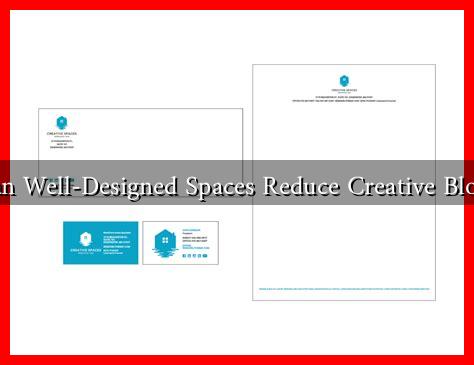-
Table of Contents
Can Well-Designed Spaces Reduce Creative Block?
Creative block is a common challenge faced by artists, writers, designers, and anyone engaged in creative work. It can be frustrating and debilitating, often leading to decreased productivity and motivation. However, recent studies suggest that the design of our physical spaces can significantly influence our creative output. This article explores how well-designed spaces can help reduce creative block and enhance creativity.
The Psychology of Space
Our environment plays a crucial role in shaping our thoughts, emotions, and behaviors. According to environmental psychology, the design of a space can affect our mood and cognitive functions. Factors such as lighting, color, layout, and even the presence of nature can either stimulate or hinder creativity.
Key Elements of Well-Designed Spaces
To create an environment conducive to creativity, several key elements should be considered:
- Lighting: Natural light has been shown to improve mood and energy levels. A study by the University of Toronto found that exposure to natural light can enhance cognitive performance.
- Color: Colors can evoke different emotions. For instance, blue is often associated with calmness and focus, while yellow can stimulate creativity and optimism.
- Layout: Open spaces encourage collaboration and communication, while designated quiet areas can provide solitude for deep thinking.
- Nature: Incorporating elements of nature, such as plants or views of the outdoors, can reduce stress and enhance creativity. A study published in the Journal of Environmental Psychology found that individuals working in green environments reported higher levels of creativity.
Case Studies: Successful Creative Spaces
Several organizations have recognized the importance of well-designed spaces in fostering creativity. Here are a few notable examples:
- Google: Known for its innovative workspaces, Google incorporates open areas, relaxation zones, and vibrant colors to stimulate creativity among its employees. Their offices feature game rooms, nap pods, and even indoor slides, all designed to encourage playfulness and collaboration.
- Airbnb: The company’s headquarters in San Francisco includes a variety of workspaces, from quiet nooks to collaborative areas. The design reflects the company’s ethos of community and creativity, allowing employees to choose environments that suit their working style.
- WeWork: This co-working space provider emphasizes flexible layouts and communal areas that foster networking and idea-sharing among diverse professionals. Their design encourages interaction, which can lead to unexpected creative breakthroughs.
Statistics Supporting the Impact of Space on Creativity
Research supports the idea that well-designed spaces can enhance creativity:
- A study by the University of Exeter found that employees in well-designed offices were 15% more productive than those in poorly designed environments.
- According to a survey by the American Society of Interior Designers, 90% of respondents reported that their work environment affects their creativity.
- Research from the University of Michigan indicates that spending time in nature can improve cognitive function and creativity by up to 50%.
Practical Tips for Designing Creative Spaces
Whether you are designing a home office, a studio, or a collaborative workspace, consider the following tips to enhance creativity:
- Incorporate natural light wherever possible.
- Use colors that inspire you; consider painting walls or adding colorful decor.
- Create distinct areas for different types of work—quiet zones for concentration and open areas for collaboration.
- Add plants or artwork to bring life and inspiration into the space.
- Ensure that the space is comfortable and ergonomically designed to reduce physical strain.
Conclusion
In conclusion, well-designed spaces can play a significant role in reducing creative block and enhancing overall creativity. By understanding the psychological impact of our environments and implementing thoughtful design elements, we can create spaces that inspire and motivate. As we continue to navigate the challenges of creative work, investing in our physical environments may be one of the most effective strategies for unlocking our creative potential.
For further reading on the impact of environment on creativity, you can explore resources from the American Psychological Association.


